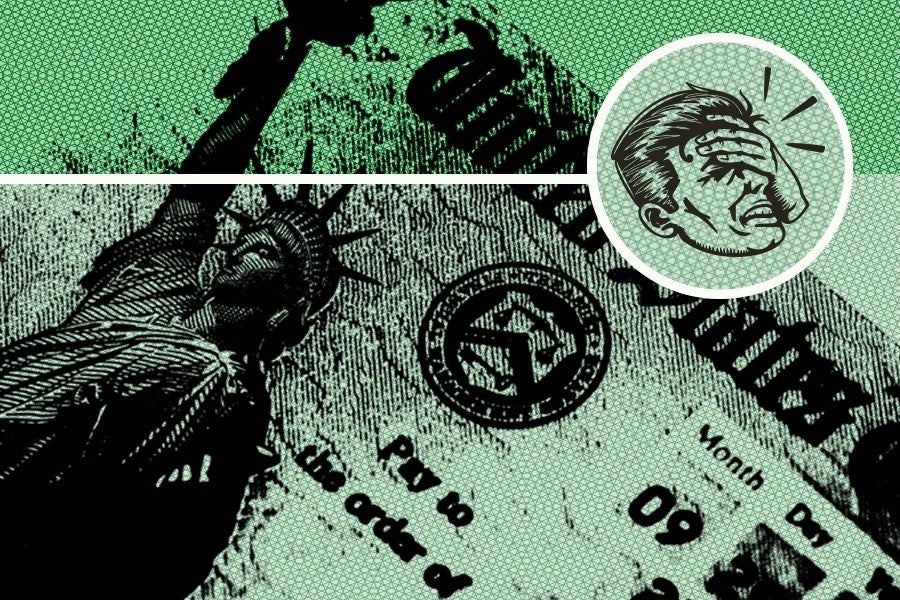Tax season is here, and that means nearly 80 percent of taxpayers will be getting refunds. That’s a lot of checks! Which got us to wondering, considering the nightmarish complexities of just doing your own tax returns, how does the U.S. government handle all of this? Let’s find out.
With hundreds of billions of dollars in refunds, how much cash does the government have on hand to cut all those checks?
The U.S. Treasury releases a statement every day on this, actually: It’s known as the Daily Treasury Statement — you can check it out here. Just to pick a day, on April 6, 2018, the cash balance at the end of the day was $291.637 billion. It fluctuates a lot, though: Go back less than two months, and the balance was $190.5 billion. And remember back in 2011 — all those stories about how Apple had more cash on hand than the government? The government only had $73 billion back then.
It fluctuates so much because the government has thousands of different bills to pay every day (think of everything the federal government pays for, from fighter jets to farm subsidies to park rangers) and that’s where the cash tends to go. Including during tax season, when it sends out millions of refund checks.
And how much do they refund taxpayers?
A mind-boggling number: Around $300 billion, to about 105 million people, according to an IRS spokesperson. So far, the average refund this year is about $2,900, a nice chunk of change to get back.
That’s a lot of checks to cut.
True, but as the IRS spokesperson points out, so much of the process is electronic. There are, of course, humans to look over all of this, but, for example, only 10 percent of all tax returns are on paper anymore — the rest is done by e-file. So it’s an IRS computer that receives your tax information, and a Treasury computer that prints out your refund check. The man in charge of all this is Treasury Secretary Steven Mnuchin, who ensures the government manages its revenue, pays all its bills and doesn’t go bankrupt. Although that’s basically impossible since he also controls the U.S. Mint and the Bureau of Engraving and Printing — both of which make our money. Anyway… more on that below.
I have trouble just balancing my checkbook, how do they not fuck all this up?
Yeah, well, the computers certainly help cut down on the errors. And the humans that are a part of the operation are career people — they probably don’t make mistakes as often as the rest of us. And since it’s, you know, their job, they take a much deeper look at things than most of us spend on our credit card statement.
So if the government is sending $300 billion back to people, where’s all that cash coming from?
Ah. This is where things get interesting — even controversial. What most people don’t realize is, the way the government works, expenditures come first. So the government never actually checks its account balance before cutting a check (there are no overdraft fees, obviously).
This simple fact is, as you can imagine, fertile soil for all sorts of conspiracy theories, but it’s also spawned a leftist economic theory called Modern Monetary Theory that says that debt and deficits are meaningless, and that Medicare and free college for everyone are easily possible. Former Federal Reserve Chairman Alan Greenspan even said one time, “There is nothing to prevent the government from creating as much money as it wants.” It sounds crazy in one sense, but in reality, it’s just the way most governments work.
Doing things this way does, obviously, lead to inflation if there’s an oversupply of money (though the inflation rate has been negligible for a couple decades). Another perspective is that inflation created by printing more money is essentially a government tax — and nobody likes taxes.
All this cash the government has every day, does it keep it all on hand?
Nope. The government doesn’t hoard cash — it just puts bills into circulation or pulls them out. There’s no Scrooge McDuck vault-tower of money that the government dips into when it pays its debts — that money is circulating amid the millions of transactions the government undertakes every day. And, really, if the government has the power to just print money at any time, there’s no need to hold onto any.
So it’s all just the usual accounting, but on a giant scale?
Yeah, basically. On the other hand, can you imagine actually keeping all that cash somewhere? It’d be absurdly complicated — the collecting, the transit, the counting, the security — all of it. It’s much easier for everything to exist as a bunch of numbers in what must be the world’s most complicated (and slow to load) Excel file ever on a U.S. Treasury server.

